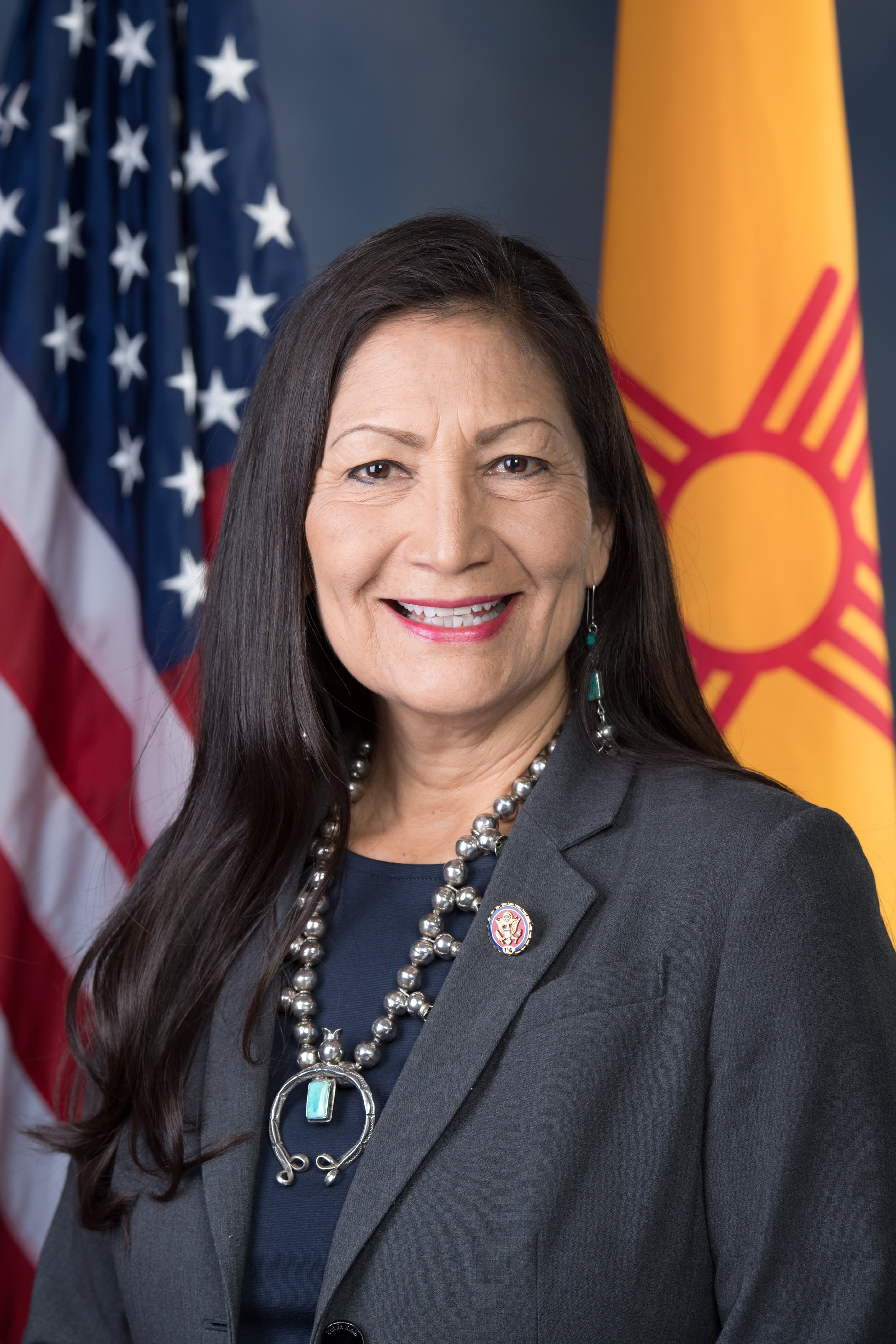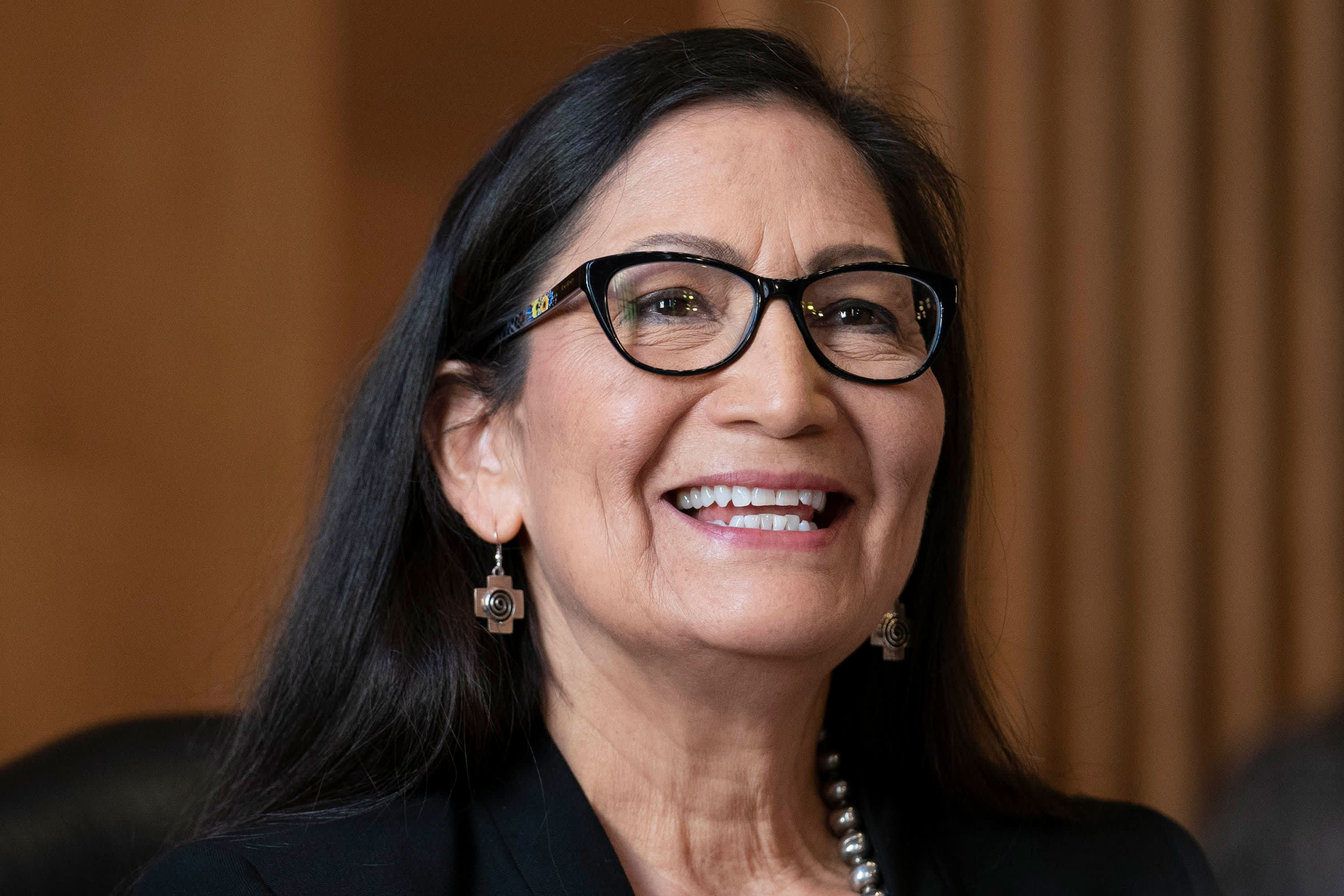
Who is Deb Haaland? A Journey of Firsts, Resilience, and Indigenous Voice
In the annals of American political history, few appointments have carried the weight of symbolism, the promise of redress, and the sheer audacity of breaking barriers as significantly as Deb Haaland’s ascendancy to the position of Secretary of the Interior. When she took the oath of office on March 16, 2021, wearing a traditional Pueblo dress and moccasins, it wasn’t just a political appointment; it was a profound moment of reckoning, a tangible shift in a narrative that had long marginalized, exploited, and ignored the Indigenous peoples of the United States.
But who is Deb Haaland, beyond the historic title? Her story is one of profound resilience, a deep-rooted connection to her heritage, and a steadfast commitment to public service, forged through personal struggle and a tireless fight for representation.

Roots and Resilience: A Foundation in Laguna Pueblo
Debra Anne Haaland was born in Winslow, Arizona, in 1960, but her lineage traces back to the Laguna Pueblo in New Mexico, a sovereign nation whose history spans millennia. Her mother, Mary Toya, was a member of the Pueblo of Laguna and served in the U.S. Navy. Her father, John David Haaland, was a Norwegian-American Marine who served during the Vietnam War and was awarded the Presidential Unit Citation. This unique blend of Indigenous heritage and military family life profoundly shaped Haaland’s early years.
Moving frequently due to her father’s military assignments, Haaland attended 13 different public schools before graduating from high school. This nomadic upbringing, coupled with her family’s modest means, instilled in her a pragmatic understanding of the challenges many Americans face. She often recounts a period in her life when she was a single mother, struggling to make ends meet, relying on food stamps, and living paycheck to paycheck. Her daughter, Somáh, was her primary motivation, pushing her to pursue higher education and a better life.
"I am a single mother who has worked her way through college and law school," Haaland stated during her confirmation hearing. "I know what it’s like to live paycheck to paycheck. I know what it’s like to rely on government services to get by." This lived experience, far from being a weakness, became a source of strength and empathy, grounding her political aspirations in the realities of everyday Americans. She earned her Bachelor of Arts in English from the University of New Mexico in 1994 and later, in 2006, her Juris Doctor from the University of New Mexico School of Law.
Her connection to the Laguna Pueblo, however, remains her bedrock. In the matrilineal society of the Pueblo, women hold significant positions of power and respect. This cultural upbringing, steeped in reverence for the land, community, and ancestral knowledge, formed the core of her identity and would later inform her policy priorities. She understood from a young age that the land was not merely a resource to be exploited but a sacred entity, intricately linked to the survival and identity of her people.
The Path to Politics: From Grassroots to State Leadership
Haaland’s journey into politics was not a sudden leap but a gradual, deliberate ascent rooted in community activism. She began her career working in tribal business development and later served as the tribal administrator for the San Felipe Pueblo. Her legal background, coupled with her intimate understanding of tribal sovereignty and federal-tribal relations, positioned her as a formidable advocate for Indigenous rights.
Her political engagement deepened as she saw the need for greater representation. She volunteered for numerous campaigns, learning the intricacies of grassroots organizing and the power of collective action. In 2012, she served as the New Mexico Native American Vote Director for Barack Obama’s re-election campaign, demonstrating her ability to mobilize and connect with diverse communities.

Her leadership qualities were soon recognized, leading to her election as the Chair of the Democratic Party of New Mexico in 2015. She was the first Native American woman to lead a state party, a significant milestone in itself. During her tenure, she worked tirelessly to strengthen the party’s infrastructure, engage more voters, and elect Democrats across the state, laying the groundwork for future successes. This period honed her strategic thinking, fundraising abilities, and her capacity to navigate complex political landscapes.
Breaking Barriers in Congress: A Voice for the Unheard
The pivotal moment in Haaland’s political career came in 2018 when she ran for the U.S. House of Representatives in New Mexico’s 1st congressional district. Her campaign resonated with voters eager for a fresh perspective and a representative who truly understood their struggles. On election night, history was made: Deb Haaland, alongside Sharice Davids of Kansas (Ho-Chunk Nation), became one of the first two Native American women ever elected to Congress.
Her arrival on Capitol Hill was celebrated as a landmark achievement, a visual testament to the growing power of Indigenous voices in American democracy. She immediately joined the House Natural Resources Committee, a strategic placement given her background and the committee’s jurisdiction over public lands, natural resources, and, crucially, tribal affairs.
In Congress, Haaland quickly established herself as a vocal advocate for environmental protection, climate action, and tribal sovereignty. She championed legislation aimed at renewable energy development, conservation of public lands, and addressing the crisis of missing and murdered Indigenous women (MMIW). She brought a unique and vital perspective to legislative debates, reminding her colleagues of the profound historical injustices faced by Native Americans and the ongoing need for equitable policies.
"The ancestors’ voices are in my head," she often said, emphasizing that her work was not just for her constituents but for generations past and future. She wasn’t just a politician; she was a representative of a legacy, carrying the hopes and burdens of millions who had been silenced for centuries.
A Historic Nomination: Secretary of the Interior
When President-elect Joe Biden announced his intention to nominate Deb Haaland as Secretary of the Interior in December 2020, it sent ripples of excitement and anticipation across Indian Country and among environmentalists. The Department of the Interior is a sprawling agency with immense power, managing over 500 million acres of public lands (nearly one-fifth of the United States), overseeing national parks, wildlife refuges, and, critically, holding the federal government’s trust responsibility to 574 federally recognized tribes.
The choice of Haaland was seen as both symbolic and strategic. For decades, the Interior Department had often been a source of conflict and pain for Native Americans, frequently managing their lands and resources without their consent or in ways that prioritized extraction over conservation. Placing an Indigenous woman at its helm was a powerful statement of intent – a commitment to a new era of consultation, conservation, and respect.
Her confirmation hearings were emotional and at times contentious, with some Republican senators questioning her progressive views on fossil fuels and land use. However, she garnered bipartisan support, ultimately being confirmed by the Senate with a vote of 51-40. The moment she was sworn in, her hand raised, her traditional Pueblo dress a vibrant declaration of her heritage, became an iconic image of a changing America.
Leading the Interior: Policy, Purpose, and Progress
As Secretary, Haaland wasted no time in charting a new course for the Department of the Interior. Her leadership has been characterized by a renewed emphasis on science-based decision-making, climate resilience, and, most importantly, meaningful consultation with tribal nations.
Among her key initiatives:
- Climate Change and Conservation: Haaland has been a driving force behind the Biden administration’s climate agenda. She has overseen the pause of new oil and gas leases on public lands, initiated ambitious renewable energy projects (especially offshore wind), and launched efforts to conserve 30% of U.S. lands and waters by 2030 (the "30×30" initiative). She has consistently advocated for a balance between energy development and environmental protection, emphasizing sustainable practices.
- Tribal Sovereignty and Justice: This has been a cornerstone of her tenure. She has prioritized strengthening government-to-government relationships with tribes, ensuring their voices are heard on land management decisions, resource allocation, and cultural preservation. One of her most significant actions was launching the Federal Indian Boarding School Initiative, a comprehensive investigation into the dark history of federal Indian boarding schools, which forcibly assimilated Native children, often leading to abuse and cultural eradication. This initiative, unprecedented in its scope, aims to shed light on historical injustices and begin a process of healing.
- Missing and Murdered Indigenous Peoples: Haaland established the "Not Invisible Act Commission" and a new unit within the Bureau of Indian Affairs to address the MMIW crisis, a long-standing epidemic of violence against Native women and girls that has been historically underreported and under-resourced. Her personal connection to this issue, as an Indigenous woman, has brought much-needed urgency and visibility.
- Public Lands Management: She has worked to ensure that national parks and public lands are managed for the benefit of all Americans, emphasizing access, conservation, and the inclusion of diverse perspectives in their stewardship.
"I feel like I’m doing the work that my ancestors literally prayed for," Haaland stated shortly after her confirmation. This sentiment encapsulates the profound responsibility she carries and the historical weight of her position. She is not just administering policies; she is actively reshaping the relationship between the U.S. government and Indigenous peoples, moving towards a future built on respect, partnership, and environmental stewardship.
A Legacy in the Making
Deb Haaland’s journey from a single mother on food stamps to the first Indigenous Cabinet Secretary is a powerful testament to the American ideal of perseverance and opportunity. More than that, it is a living embodiment of the ongoing struggle for equity and representation. She represents a pivotal shift, demonstrating that the voices long silenced are now not only being heard but are leading.
Her tenure as Secretary of the Interior is far from over, and the challenges facing the department – from climate change to land disputes – are immense. Yet, her presence at the highest levels of government has already irrevocably altered the landscape of American politics. She has not only broken a glass ceiling but has also opened a new door, inviting future generations of Indigenous leaders to step through and shape the destiny of a nation that is finally beginning to acknowledge its full, complex history. Deb Haaland is not just a Secretary; she is a beacon, a bridge, and a living testament to the power of an authentic voice.


